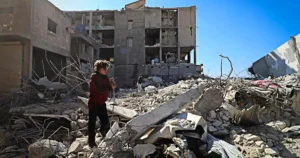Delhi is once again grappling with hazardous levels of air pollution, with the Air Quality Index (AQI) hitting the “severe” category in November 2024. The capital’s air quality, especially during the winter months, is annually plagued by a combination of factors, including vehicular emissions, industrial activities, and seasonal stubble burning in neighboring states like Punjab and Haryana. This year’s crisis has triggered public outrage and calls for urgent intervention.
Key Contributors to the Crisis
- Vehicular Pollution: Delhi’s dense population and high number of vehicles contribute significantly to the city’s pollution levels. Diesel and petrol emissions exacerbate the situation, particularly during peak traffic hours.
- Stubble Burning: Farmers in nearby states burn agricultural residue to prepare fields for the next crop cycle. Despite government subsidies and alternatives like crop-decomposing chemicals, stubble burning remains widespread. The resultant smoke blankets Delhi every year.
- Weather Conditions: Winter weather further exacerbates the crisis, as low temperatures and reduced wind speeds trap pollutants close to the ground, leading to smog.
Impact on Health and Lifestyle
The alarming AQI levels pose serious health risks, especially to vulnerable populations like children, the elderly, and those with respiratory illnesses. Hospitals report a surge in cases of asthma, bronchitis, and other respiratory problems during this season. Public spaces are deserted, and outdoor activities are curtailed as citizens are advised to stay indoors.
Government Response
The Delhi government has reintroduced measures like the Odd-Even Scheme, where vehicles with odd and even license plates alternate on the roads. Additionally, restrictions on construction activities and industrial emissions have been enforced. However, critics argue that these steps are short-term solutions that fail to address the root causes of the crisis.
Public Demand for Action
Environmental activists and citizens are urging the government to adopt more sustainable practices, such as:
- Promoting electric vehicles (EVs) through subsidies.
- Expanding public transportation networks.
- Collaborating with neighboring states to find alternatives to stubble burning.
- Enforcing stricter penalties for industries violating emission norms.
Way Forward
Long-term strategies are essential to combat Delhi’s air pollution crisis. These include renewable energy adoption, afforestation efforts, and robust urban planning to reduce reliance on personal vehicles. Public awareness campaigns also play a crucial role in encouraging eco-friendly practices.
Delhi’s pollution is not just an environmental issue; it is a public health emergency that requires coordinated efforts from policymakers, industries, and citizens. Without sustained and innovative solutions, the capital risks compromising the health and well-being of its population year after year.






